Nureva® Console
Last Updated: June 1st, 2022
The auxiliary port options are located in the device settings section of Nureva Console client. For a detailed description of the auxiliary in and auxiliary out ports, see our "What kind of auxiliary jacks are compatible with the HDL300 system?" article.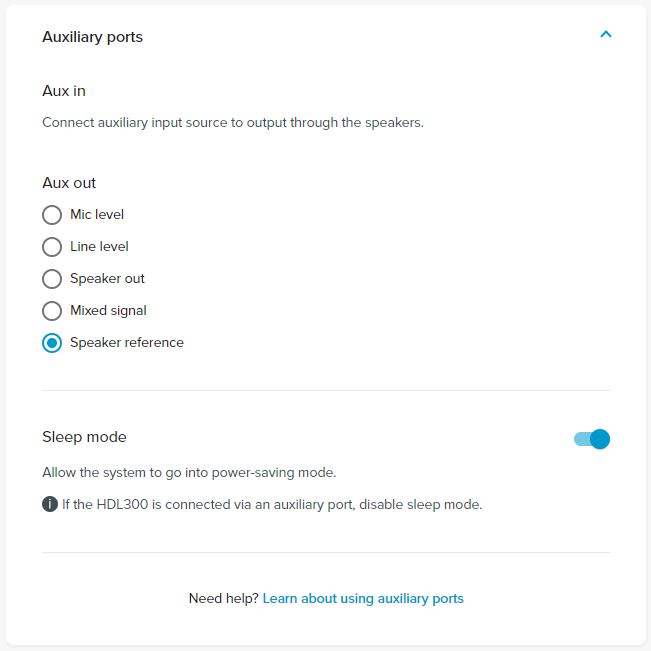
All connections are unbalanced 3.5mm ports with a 3-contact tip ring sleeve. | 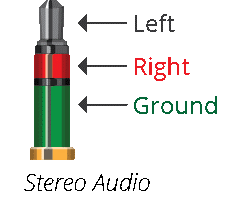 |
Audio jack cabling
As the signal and cable are single-ended, keeping the cabling length to a maximum of 6 feet to ensure minimum noise is coupled onto the signal. Avoid running noisy cables next to these audio cables so coupling does not occur. Installing the connected equipment next to the connect module will help make sure this happens.
Auxiliary out
Different auxiliary output modes can be selected in Nureva Console for interoperability with different audio systems.
This table outlines different settings for the auxiliary out port for which type of device that's being connected. The default signal is echo-canceled microphone pickup with a maximum output level of 0.92 Vrms

NOTE: The Nureva Aux In / Out connections are single-ended, unbalanced signals with default maximum output signals as given in the table above. Any equipment requiring voltages below these levels may result in clipping, distortion, and in extreme cases, damage to connected systems. Equipment requiring voltages above these levels will not be adequately driven by the HDL300 system's output signal and may result in quiet / no audio on the channel. Before connecting to the Nureva connect module, make sure the third-party device voltage levels are adequate or adjusted properly by additional interfacing hardware.
Microphone out (mic level)
 | The output contains the in-room microphone pickup that is echo canceled (near-end or local audio). | |
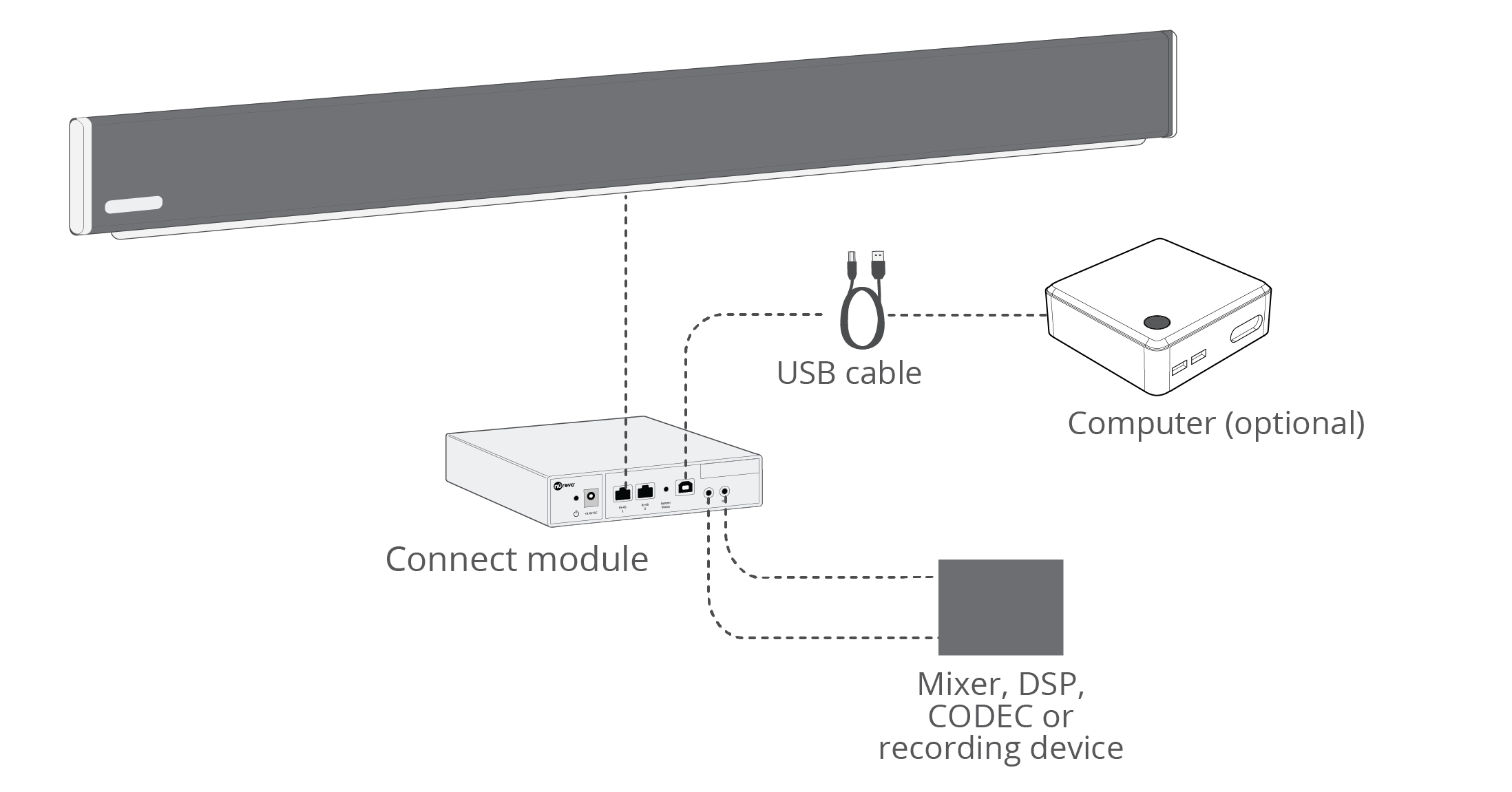 | ||
Microphone out (line level)
 | The output contains the in-room microphone pickup that is echo canceled (near-end or local audio). | |
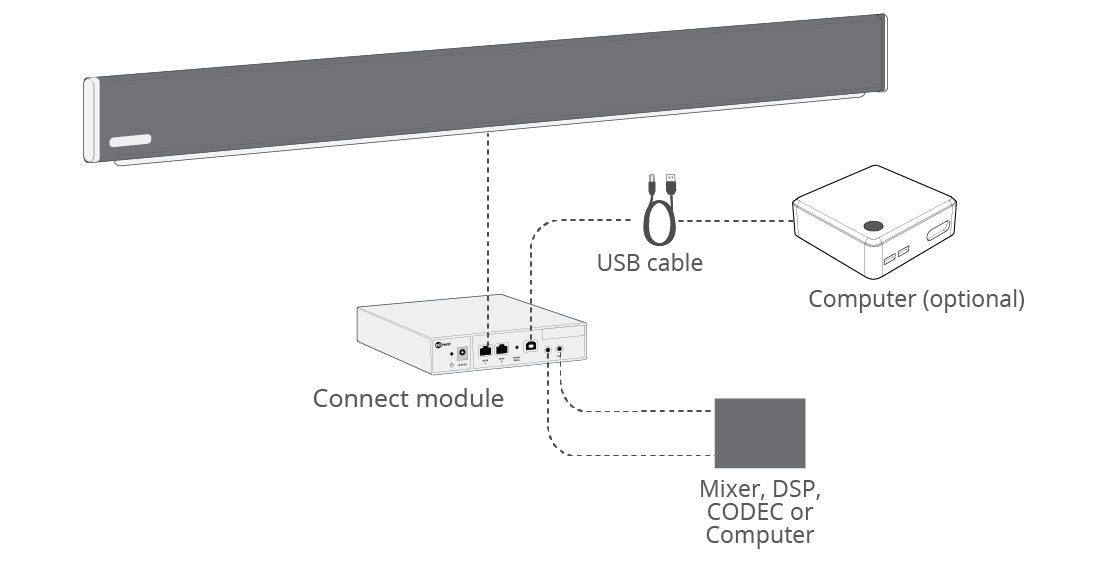 | ||
Speaker out
 | The output contains far-end audio for playback on external speakers. The output is a mono signal and the HDL300 speakers are disabled. Near-end audio to the computer and far-end audio from the computer is sent by USB. For best results, the volume should be controlled from the computer, and amplifier settings should be fixed. | |
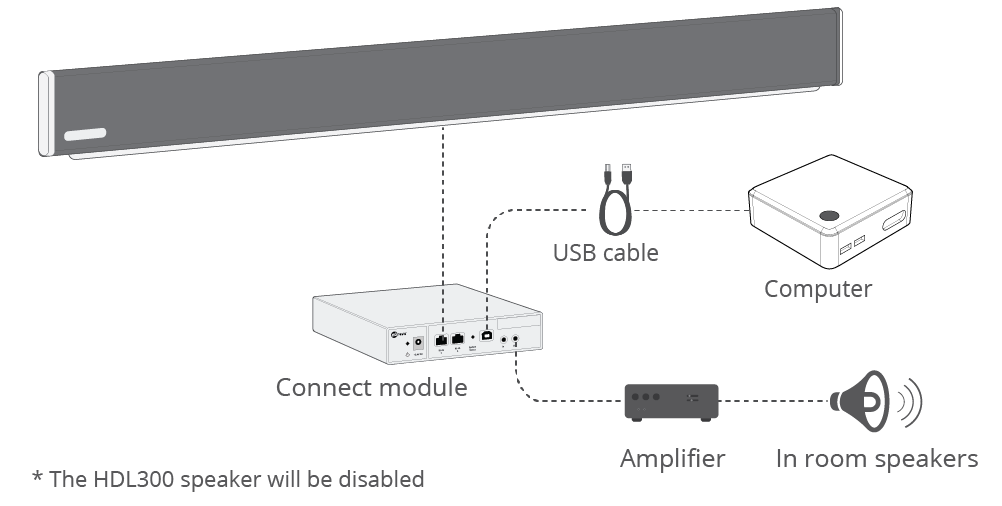 | ||
Mixed
 | The output contains both near-end and far-end audio mixed into one signal. With a mixed signal, hearing aid transmitters can transmit both the in-room audio and far end to hearing aid devices. | |
 | ||
More about Mixed mode
For more details and suggestions on how to use the HDL300 system's mixed-mode, see our "Which devices can I use with HDL300's mixed mode?" article.
 | Mic level is maximum 0.23 Vrms (0.65 Vp-p) into 10 Kohm load. | |
 | Line level is maximum 0.92 Vrms (2.6 Vp-p) into 10 Kohm load. |
Speaker reference
Speaker reference is a setting for the Auxiliary out port for the HDL300 and Dual HDL300 systems. This setting is for use with acoustic tracking cameras where a reference signal from the in-room speakers is required. Enabling Speaker reference mode allows acoustic tracking cameras to use the in-room reference signal to cancel out the audio from the speakers so the camera does not track to the speakers. Speaker reference mode is only available when using the Auxiliary out port for the HDL300 and Dual HDL300.
To configure this setting, navigate to the device settings in Nureva Console, open the Auxiliary ports menu, and select Speaker reference. Nureva Console cloud users then click apply.
Auxiliary in
Speaker input
 | Audio for playback to the room. The signals from the auxiliary in port will get mixed with any signals from a USB audio source. *make sure to disable sleep when using the auxiliary in. |
Sleep
If you're using any auxiliary in or out connection, make sure to disable sleep under the auxiliary ports options.

